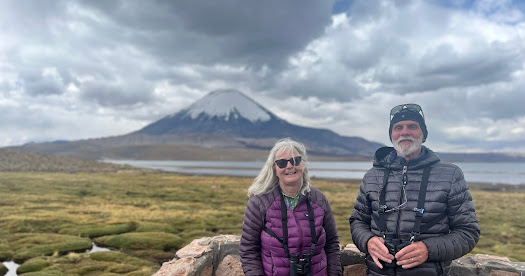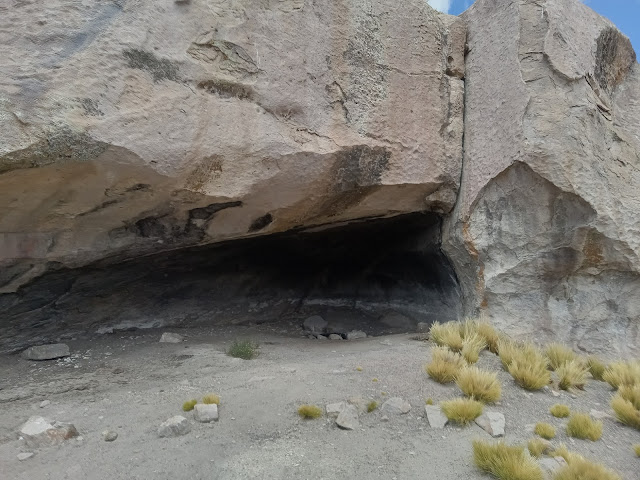Today was the day we ascended to the highest altitude in our trip. We took our altitude pills and got in the van.
Today we hit three main habitats as we ascended in altitude. The first was the arid pre-Puna shrubland.
Here we found the ornate tinamou, a large grouse-like bird.
As we ascended in elevation we hit the Puna grasslands.
The bright green bogs in the riparian areas are the bofedales.
Puna in the rear, Bofedal in the foreground
Here we found vicuna poop!
The crested duck:
And the prize of the day, the diademed sandpiper plover.
Common sight: our guide Lalo waiting for us with his scope propped on his shoulders
Our next stop was las Cuevas, a loop trail past rocky outcrops with caves
that provided shelter for hunters 9000 years ago, now the home of various animals.
This is a Peruvian viscacha:
There were also Bolivian Greater Mice:
Larger than a pica, smaller than a marmot
According to Lalo they travel in threes and when we played their song they responded in a chorus.
At some point Lalo spotted puna rheas but they were far far away. Nevertheless we get to check them off the list.
.
Finally we reached Chungara Lake, the highest lake in the world* at 4,517 metres (14,820 ft), home to giant coots
And three species of flamingos.
Andean flamingos have yellow legs and a black triangle on their closed wings.
Chilean flamingos have a pink bustle and red knees.
And James's flamingos are smaller with bright red legs (no decent picture).
Our last stop was the pueblo of Parinacota (means place of the flamingos). We were moving pretty slowly by this point. My lungs were burning and we all had headaches. I remember struggling to walk up a slight slope in the road.
We did manage to track down an Andean flicker here. They nest in burrows here as there's no tree trunks to excavate.
Alas no decent picture. However I'll finish off with a great shot of some vicunas.
At one point vicunias were endangered because of their valuable wool. Now they are rounded up every year and sheared so the locals can earn income and the vicunas are spared.
All in all a great day and a highlight of the whole trip. The scenery was fantastic and we saw tons of birds.
Total species today: 60 Lifers: 49
*We were told that it was the highest lake in the world but it turns out it's more accurate to describe it as one of several lakes reputed to be the highest in the world. It is higher than Lake Titicaca, which is the highest commercially navigated lake in the world. There are other smaller lakes in the Andes and the Himalayas that are higher than Chungara.





















No comments:
Post a Comment